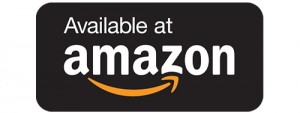The most ancient scriptures of the Hindu religion, the Vedas, are recognized as the earliest documented literature of mankind. It is affirmed that the Vedas are the very first Hindu scriptures, but the flow of the written word would never stop in Hindu philosophy. The Vedas are regarded as literature immortal.
The Upanishads, which are the culmination of the Vedas, show abundant evidence of this attribute of ingenious change in the Hindu scriptures. The worship of the nature gods or deities, which occupied the prime place in the Aryan culture, was almost replaced by worship of one Supreme God, who was formless and transcendental. So, too, were the many lengthy and complicated ritualls discouraged but not discarded.
Although there is evidence of significant religious activity the prehistoric period of the Sindhu-Saraswati civilization, it would be correct to say that the real foundation of Hinduism was laid in the Vedic era. Most authorities consider that the first of these Vedas, the Rig Veda, was revealed around 1500 BCE. It is also considered the earliest scripture in human history. It is believed, however, that these psalms of wisdom were disclosed over many centuries, memorized, and orally conveyed from generation to generation within priestly families, then finally written down in the Vedic language, Brahmi, about a thousand years later. Historically one of the most impressive feats of long-term memory is this oral recitation of the Vedas. This would afterward develop into the classic Sanskrit in the earlier part of first millennium.20Traditional way of learning Vedas and Agamas by listening is still in vogue in today’s priest traing course. The teacher chants the verse once, then students as a group chants twice, striving to be faithful to the subtilies of the pronunciation and rhythm of the verse. The recitations go for many hours in a day, and every day for years. Students begin at early age of 5 years when the memory is strong.
The most precious wealth is the wealth acquired by the ear. (Tirukal)
Series of learned sages, the Rishis, sat on the riverbanks, the mountaintops, and in the forests for extended periods of time. Rishis contemplated, and meditated, seeking solutions for the eternal problems of mankind. They would establish a spiritual union with the divine and be inspired with the revelations from their inner selves. These inspired thoughts were then passed on from father to son or from teacher to pupil, as Srutis, the revelations.
The word sruti is evolved from the root shru, which means, “to hear.” It is said that the gods dictated the Vedas, and the sages first heard them internally and then passed them on. The authorship of these earliest scriptures is regarded as nonhuman (apauarusya) in origin.21 Professor Max Muller has stated, “One feels certain that behind all these lightning flashes of religious and philosophic thought there is a distant past, and a dark background of which we shall never know the beginning.” Recent evidence suggests that the Rig Veda may have been created in the form of spoken word shruti as early as 10,000 years ago, or even earlier. Hindus believe that only the spiritual seers of highest purity (Rishis) perceive these inspirational truths, “almost as naturally as fruit is produced from a flower out of the mysterious center.”22
Ancient Rishis worshipped gods of nature in the Vedic era. Sun, or Surya, is the pivotal god. Hindu sages recognized the vital significance of solar energy in man’s life. A most auspicious prayer, the Gayatri Mantra, also known as the Savitri Mantra, has been consecrated to Savitra, the sun god. Savitra, according to the scriptures, refers to the sun before the dawn, while Surya is the name to use when the sun is manifest. The word mantra, which has been adapted by Western society, is derived from man (mind) and tra (purity). Mantras are energy-based sounds. Saying any word with a deep sense of commitment produces an actual physical vibration. All mantras have meaning. Each syllable and word has a reason for being there. When produced correctly and with honest intent, the mantra comes alive. Repeating a mantra makes a groove in the mind of the person speaking it, until it is absorbed in the behavior and manner of everyday living. In the opinion of the learned Maharishi Mahesh Yogi, “Vedic words are the words of the transcendental field, being the structuring dynamics of the transcendental field; they are not limited to space and time.”23
Special importance has also been given to god Varuna, the lord of order (ruta/rita). Hindu Rishis conceived the phenomenon of the cosmic order of the Divine as the dharma, or righteousness.24 The celestial god Indra, the lord of thunderstorm and rain, also called the warrior god, has been acclaimed because of the many bounties associated with this god. The god of fire, Agni, also is given a very high position. All sacrifices are conducted through fire. Through the virtue of fire, the elements would disperse in all the cosmos and would come back to us in mystic refined way. In the Vedas there is mention of Lord Shiva as Rudra, the god of storm associated with destruction.
In ancient times, animal sacrifice was common. The highest type was the special ritual sacrifice of a horse (asvamedha), conducted by the king to express his power and authority.
Each Veda is divided into two parts: Karma Kanda and Jnana Kanda. Karma Kanda deals with the rituals and is again divided in two sections: Samhita, which contains the hymns or mantras in praise of the Divine; and Brahmana, which explains the meaning and the use of these hymns. Jnana Kanda deals with spiritual knowledge. It also has two divisions: Aryankas, which contains the spiritual knowledge learned in the solitude of a forest, and Upanishads, which contains the knowledge learned at the feet of a master, or guru.
Ved Vyasa compiled the Vedas—literally, the books of knowledge—into four parts:
Rig Veda: It contains the hymns of knowledge, the knowledge of the Divine, in the form of mantras and ruchas. The ruchas are the beautiful eulogies in praise of God. It has 1028 hymns set in more than 10,000 verses. Rig Veda is the Jnana Veda, the Veda of knowledge.
Yajur Veda: It contains more than two thousand verses, mainly focusing on the rituals. Sacrifice is one of the most important parts of this Veda. Yajur Veda is called the Karma Veda, the Veda of deeds or rituals. Performance of rituals sows the seeds of good deeds in life.
Sama Veda: It contains nearly two thousand verses, mostly from the Rig Veda, set to music. It is also called the Veda of Upasana worship. The worship ceremonies stabilize the ever-wandering mind toward divine thoughts and prayers. Classical Indian music originated from this Veda.
Athar Veda: It contains more than six thousand verses. It deals with science and many other secular subjects.
Each Veda has its own mahavakya, which narrates the grand truth of the Vedic philosophy:
Rig Veda: Prajnanam Brahma: “Divine consciousness is the supreme reality.”
Yajur Veda: Aham Brahmasmi: “I am Brahman.”
Sama Veda: Tat Twam Asi: “That thou art.”
Athar Veda: Ayam Atma Brahman: “The atman, or soul, is Brahman.”
The early Vedic scriptures were more occupied with mythological nature gods, such as the sun (Suray) or the moon (Chandra). In later periods of the Vedic era (1000–700 BCE), there was a shift toward the Brahmana rituals and sacrifices that were devoted to the transcendental divine. The Upanishads (800–500 BCE) represent a subtle reaction to the glorification of the ritual philosophy, giving more attention to the mystical or transcendental thoughts, such as identity of the individual soul (atman) and the soul of the universe (Brahman).
Along with the main body of the Vedas, the Upavedas, or secondary Vedas, were created. These contain more secular sciences, such as the science of life (Ayurveda) and Vedic mathematics. Each Veda has its own Upaveda.
The Upaveda included in the Rig Veda—ayurveda, as it is called—deals with medicine and health. The Upaveda in the Yajurveda is dhanurveda, which is concerned with archery and the military. The Upaveda in the Samaveda is gandharvaveda, which deals with music. The Upaveda in the Atharveda is sthapathyaveda, which is concerned with astronomy, astrology, engineering, and mathematics.
The gandharva music of the Sama Veda may have been the beginning of this fine art by mankind. The classical notes of this period have remained an inspiration for all music lovers through the centuries. India became the first land to use the system of notations.25
Vedic mathematics is based on the harmony and perfect precision of the celestial movements. It has been observed historically that after the Muslim invasion, Hindu scholars were called to Arabia in the seventh to eighth century CE to demonstrate Vedic mathematics, which was later carried to the West and all over world. Aryabhatta (476–520 CE) was the first mathematician to try to explain the causes of an eclipse.
Astrology or Jyotish Vidya has occupied considerable attention in Hindu religion. Although there are no scientific evaluations about this study, some of the revelations are amazingly correct in detail.
In Hindu theology, the older scriptures and their teachings were never defied or contradicted. Albeit subtly modified, they were always revered. Never totally discarded, the old scriptures continued to remain in synergy with the new ones, as considered suitable. In this transition from the old to the new, violence remained absent and was discouraged in all forms. This gentle evolutionary change besides sowed the seeds of utmost respect for the elderly in the Hindu family culture-a trait that has become a unique feature in Hindu society.




